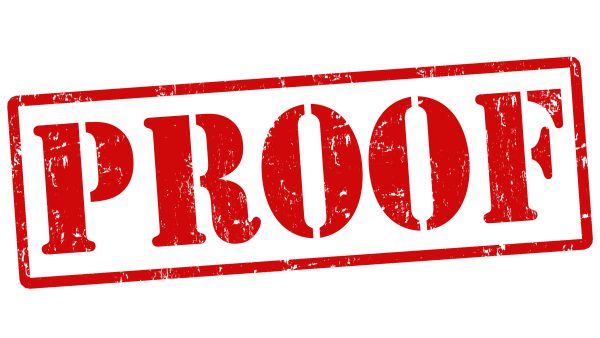Looking for Expert-Level VA Claim Answers?📱Call Us Now! 737-295-2226
After long weeks of putting together your VA claim, you’ve finally received your VA award letter. You open it and…
You’re left asking, “How do I read my VA award letter?!”
After a long, and at times confusing and frustrating process, you’ve waited for this moment, only to find that the letter itself is confusing, too. There can be a lot of information in the letter, and it’s important to understand all of it to get the full benefits you’ve been awarded.
Understanding what’s in the letter can also help you determine if any mistakes were made which, unfortunately, does happen sometimes.
Thankfully, our team of experts at VA Claims Insider knows exactly how to break down your VA award letter so that you know what to expect going forward.
“So, how do I read my VA award letter?”
When you’re going over your letter, it helps to recognize that the VA organizes their decision letters into four main sections. They are:
- An introduction
- The decision
- A list of all the evidence that was taken into consideration
- The reasons why they made the decision
Before we dive into your VA award letter, bookmark this useful link to download your VA decision letter online.
The Introduction
This is the simplest part of the letter. You should see the date of the letter, your name, mailing address, VA file number (often your social security number), and a reference number for your case.
Having your file number and reference number is important. You will definitely need these as you engage with the VA regarding your benefits.

The Decision
Hopefully, this is the best part! This is where you’ll learn if your claim was granted or denied.
If granted, the letter will give the reasons the VA accepted your claim. The letter will describe what disability you were granted an award for and the percentage that they have decided to rate it.
This will be a short section, only about a sentence long, unless there were multiple conditions under consideration. If this is the case, they will each be described individually.
Next, you will see a list of the monthly financial benefits you’ve been awarded, as well as what date you will start collecting those benefits. There will also be a breakdown of any funds that may be withheld.
If you have dependants, you will see in the VA decision letter whether or not they were considered for your benefits. If they were, there will be dates for the children, marking the day they turn 18. This is the VA letting you know that on that child’s 18th birthday, the benefits for them will stop being distributed.
This is important to keep track of because if your children continue with school after turning 18, you must file another claim to extend benefits for them.
Next, will be a summary of your payment which will inform you what account your payment is going to and when you will start collecting these funds. There may even be information telling you how to set up your direct deposit if you haven’t already done so.
This is IF your claim was granted.
If your claim was denied, there will be a brief description of the VA’s reason(s) for denying your benefits claim, then nothing more in this section. If you’d like to understand the Top 20 reasons why the VA may deny a claim, read our article here.
The Evidence Considered
If you have a disagreement with the decision the VA has reached for you, this next section is the most important part of the letter.
Here, the VA provides a breakdown of all the evidence they looked at in order to reach a decision about your claim. You will want to take your time evaluating this section to make sure that they didn’t overlook anything.
Make sure that they included all of the following that applies to you:
- Your service treatment records
- Private medical records
- X-rays
- VA screenings
- Military records of illness or injury
You will also want to make sure that they have the effective date of your claim correct. Literally anything you or the VA may have overlooked could be helpful if you decide to appeal the VA’s decision.
Really sharpen your recall as you read through this section; think about what other evidence you might have access to that could help you get the benefits you deserve. You may think of something you didn’t submit previously that could be a supplemental claim.

The Reason for the Decision
This will be the longest part of the letter. Here you will be able to see, in detail, why the VA chose to grant or deny your decision, why they chose the rating they assigned you, and why the rating isn’t higher (if less than 100%).
Claim Granted
One thing in particular you will want to pay attention to is the regulation or CFR code that the VA used to determine your rating. This is the code for your disability and the rating level that code is eligible to receive in benefits.
By knowing what code the VA assigned, you can use it as a reference to learn what may be available to you should your condition worsen, or to determine if, in your opinion, you should have qualified for a higher rating under this regulation.
The VA will provide a description of your rating and explain why this CFR fits your claim. They may also describe why they did not believe a higher rating was warranted.
Claim Denied
If your claim was denied, the most likely reason is that the VA could not establish a service-connection for your condition. Issues with your diagnosis are very rare as long as the medical evidence is present.
But without a clear nexus (or link) between your condition and an event, injury, or illness that occurred during your time in service, you cannot be awarded VA disability compensation. We’ve broken down the Top 3 reasons why the VA could deny a claim for not being service-connected in this post.
At the end of this section, even if denied, the VA will list “favorable findings.” This is anything that the VA considered an acceptable part of the claim. This will likely be that the VA recognizes you are diagnosed with the condition you applied for.
The favorable findings are important to note as they can guide you should you choose to appeal. If the VA has already established that you do, in fact, suffer from the condition you applied for, that leaves you knowing that you need to focus on establishing nexus, or service-connection, going forward, for example.
Finally, the letter should include information regarding how to begin the appeals process if you disagree with your decision. A NOD (Notice of Disagreement) should be attached to help you get started, as well as a VA Form 4107, which describes your right to appeal.

If You Disagree With Your VA Decision Letter
If you disagree with the decision that the VA assigned your claim but you don’t have additional evidence to submit, you can choose to seek a higher-level review or HLR.
In a HLR, you are not allowed to submit any new information to support your claim, you are simply requesting that the decision be reviewed by a higher level official within the VA.
If you initiate a HLR, you can also request a 5-min informal phone call with the DRO, Decision Rating Officer, to explain why you disagree with the decision before they make a new rating decision on your claim. The DRO is a more senior rater who may see things the original rater overlooked.
The bottom line is, if you disagree with the decision in your VA disability rating decision letter, there are options for you to exercise and ways to receive a different decision if your condition and the evidence supports it.
To learn more about how to read your VA disability letter, watch our VA Claims Expert’s video below!
Understanding Your Award Letter
It’s normal to feel confused by a VA disability award letter. The VA award letter has a lot of information in it which can make it intimidating to read and sometimes difficult to understand.
Just remember, this information is important. It’s also very useful in helping you decide what actions to take, going forward.
If you got the decision you were looking for, then CONGRATULATIONS! That’s a great feeling and proves that the time and effort you put into filing your VA claim was worth it.
But if you are disappointed in your VA decision letter, this is your chance to make a plan for resubmitting your claim. The information provided in the letter should help your Board of Veterans appeal (known as a BVA) have focus, since you now know the reason(s) you were denied the benefits you feel you deserve.
And if you’re STILL waiting on your VA decision letter, here are 3 reasons why it’s taking so long!
If you’d like help putting together a comprehensive appeal, we have an awesome team here at VA Claims Insider ready to do just that! Our team of VA experts has helped thousands of veterans file successful appeals over the years, and we’re ready to talk to you about how to make your claim successful, too.
You can start now by clicking HERE!
Are you STUCK, FRUSTRATED and UNDERRATED?
You are not alone! We are Veterans helping Veterans!
Become an Elite Member and work with our Veteran Coaches to get the rating you deserve!
About the Author

About VA Claims Insider
VA Claims Insider is an education-based coaching/consulting company. We’re here for disabled veterans exploring eligibility for increased VA disability benefits and who wish to learn more about that process. We also connect veterans with independent medical professionals in our referral network for medical examinations, disability evaluations, and credible independent medical opinions and nexus statements (medical nexus letters) for a wide range of disability conditions.



